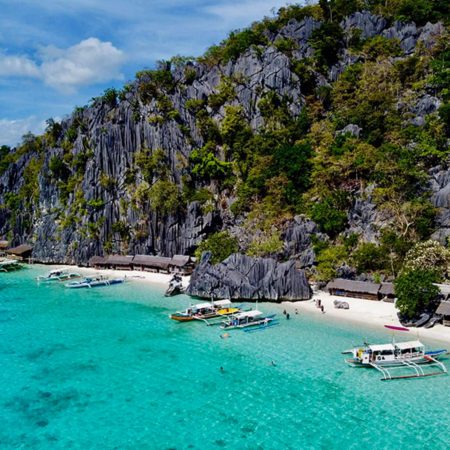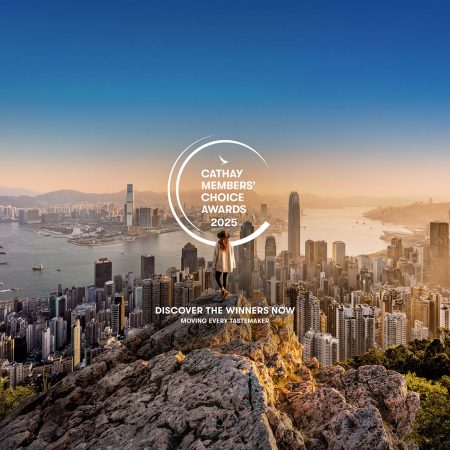10 spectacular natural wonders of China

The Chinese Mainland’s vast expanse is brimming with stunning landscapes. Here, we introduce ten of the country's natural wonders, complete with the best times to visit and travel tips to help you explore these magnificent sites.
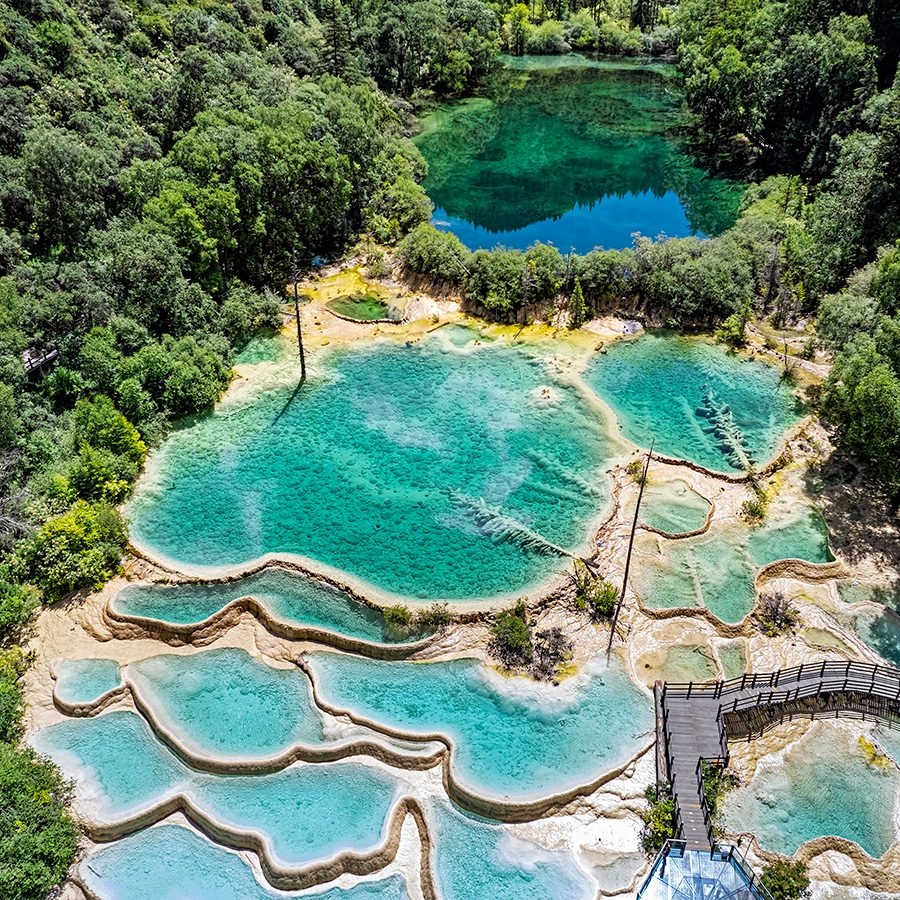
Credit: Sky Blue/Getty Images

Credit: Serjio74/Getty Images
1. Sichuan - Jiuzhaigou National Park
Located in the Sichuan Province, Jiuzhaigou – named after the nine Tibetan villages in its mountainous terrain – spans 72,000 hectares and consists of three main valleys. More than half the area is pristine forestland, home to diverse wildlife, while the park's crystal-clear teal lakes draw visitors from far and wide.
Peak season: July to October is the best time to visit, as autumn offers a kaleidoscope of colours in the surrounding forests.
How to get there: fly to Chengdu with us. At Chengdu’s New South Gate bus station, look for the shuttle to Jiuzhaigou National Park – there are six direct buses a day.
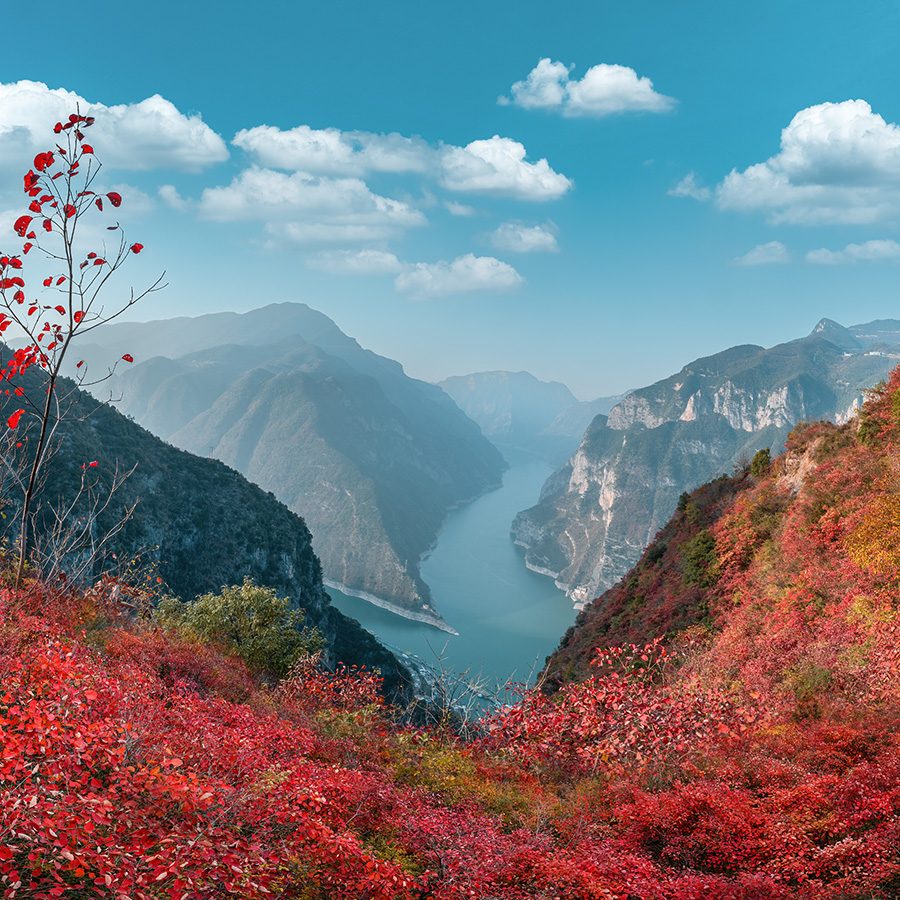
Credit: ViewStock/getty Images
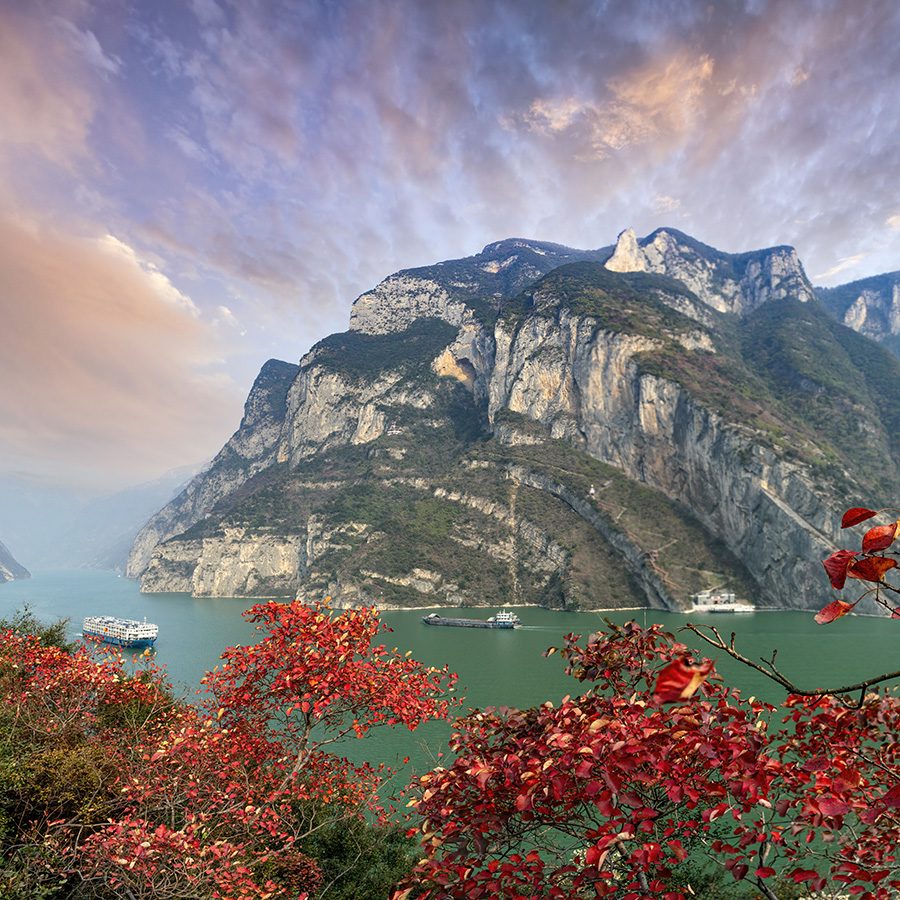
Credit: ViewStock/Getty Images
2. Chongqing - Wushan
The Tang dynasty Chinese poet Yuan Zhen once said: "after seeing the sea of clouds at Wushan, all other waters pale in comparison."
To witness the majestic sea of clouds atop Wushan Mountain and surrounding landscapes is nothing short of remarkable. From its peak, take in the endless mountain gorges, or enjoy a leisurely boat trip to admire the breathtaking natural beauty of the Lesser Three Gorges.
Peak season: plan your visit between November and December to see the region’s vibrant red foliage.
How to get there: fly to Chongqing with us. From here, a short 70-minute domestic flight takes you to Wushan Airport. Once in Wushan, head to the city’s bus terminal and jump on bus number 101 or 105, both of which will take you to the mountain.
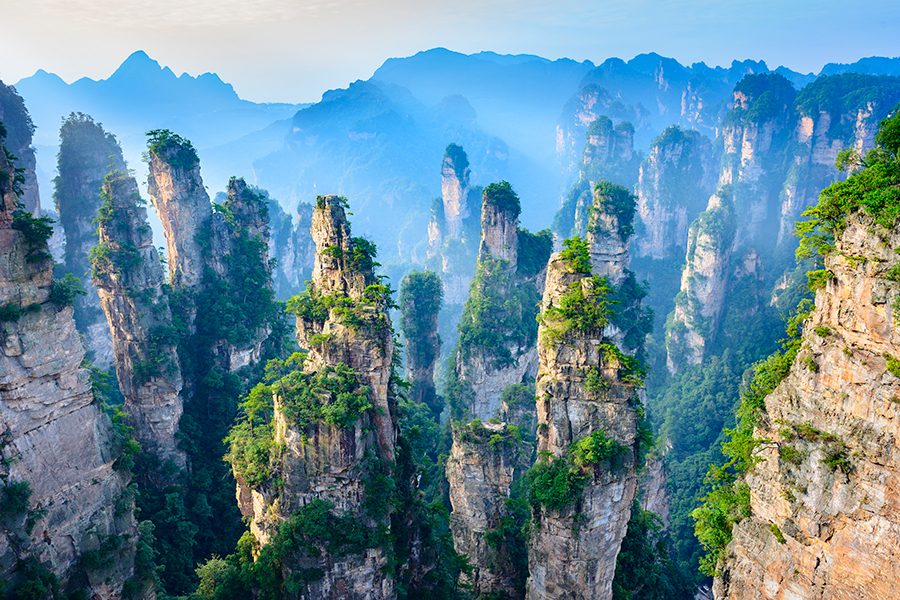
Credit: aphotostory/Getty Images
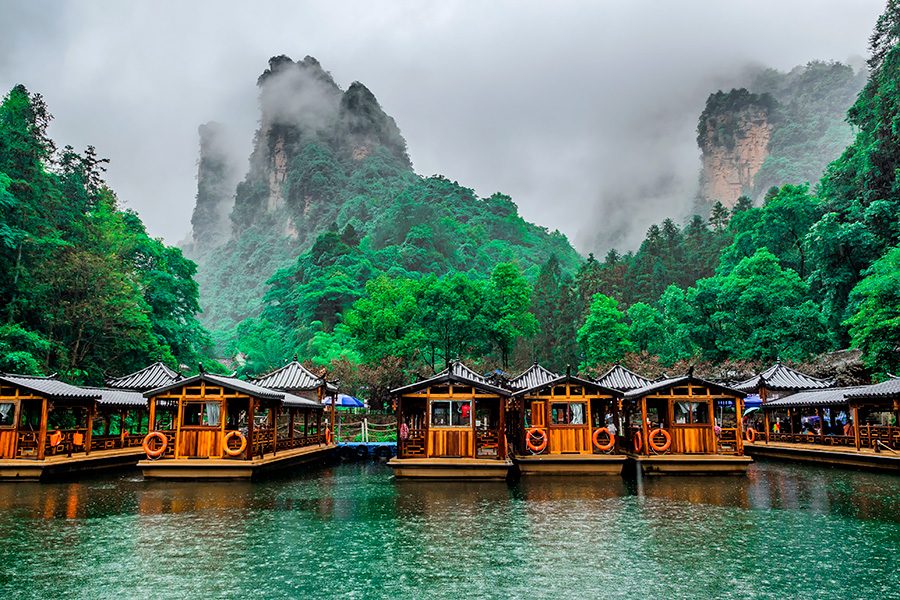
Credit: R Scapinello/Getty Images
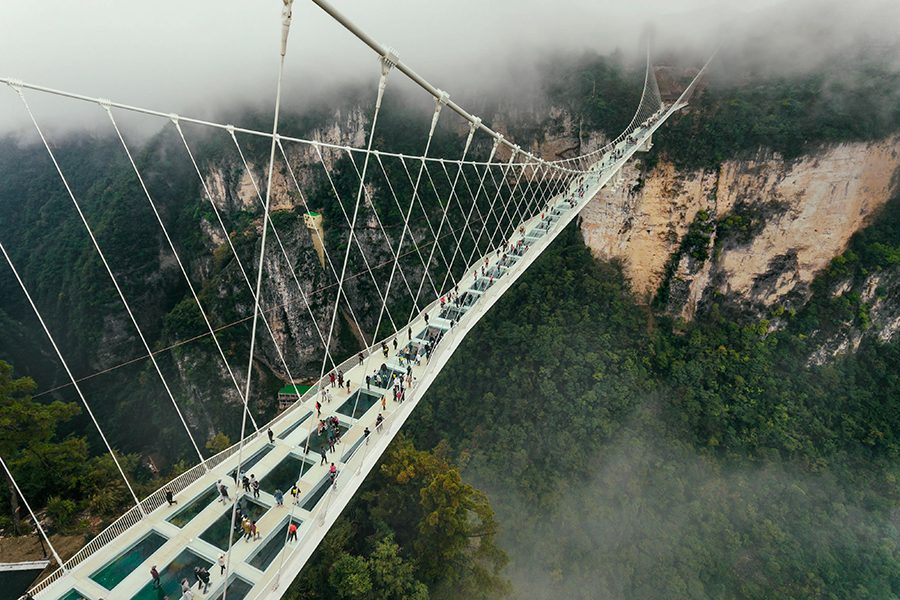
Credit: Media Production/Getty Images
3. Hunan - Zhangjiajie
Zhangjiajie is famed for its Unesco World Heritage site, the Wulingyuan Scenic Area. This scenic area encompasses the Zhangjiajie National Forest Park and the Zhangjiajie National Geopark, where virgin forests and towering sandstone pillars form a mesmerising landscape.
Peak season: the modestly warm climate from April to October makes it a popular time for visitors.
How to get there: fly to Shanghai with us. From here, travellers should take a domestic flight to Zhangjiajie Hehua International Airport. Jump on the Zhangjiajie National Forest Park/Wulingyuan shuttle bus at Zhangjiajie Central bus station, which takes around an hour. Alternatively, you can opt for a taxi or private car.

Credit: Comezora/Getty Images
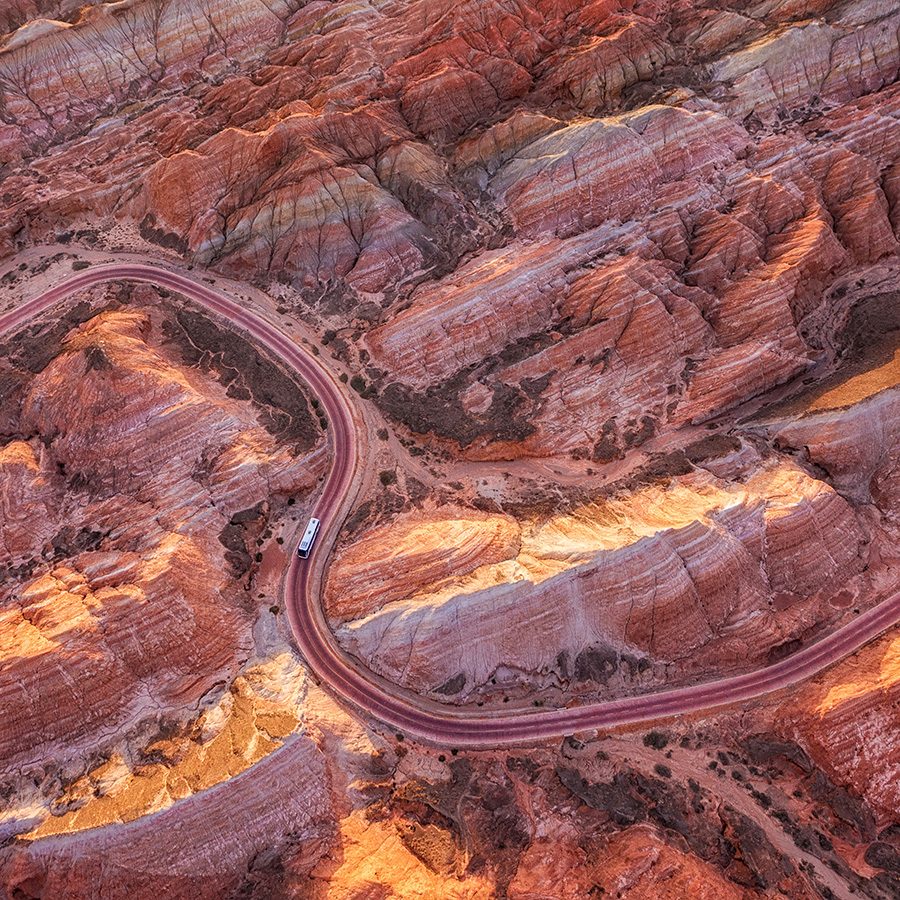
Credit: Kaicheng Xu, landscape and architecture photographer/Getty Images
4. Gansu - Zhangye National Geopark
The rainbow-hued rock formations of Zhangye National Geopark must be seen to be believed. This colourful landscape, with an average altitude of nearly 2,000 metres, was formed over millions of years through the sedimentation of sandstone and other minerals – making it truly one of nature's masterpieces.
Peak season: June to September’s cool and breezy weather is ideal for exploring. The afternoon sun provides the best lighting for photos – stick around after a rain shower when the rocks' colours become even more vivid.
How to get there:� fly direct to Xi’an with us. Then, catch a domestic flight or the Lanzhou-Zhangye High-Speed Railway to the city of Zhangye. From Zhangye West bus station, a direct 40-minute shuttle bus toward Danxia will take you to the park.
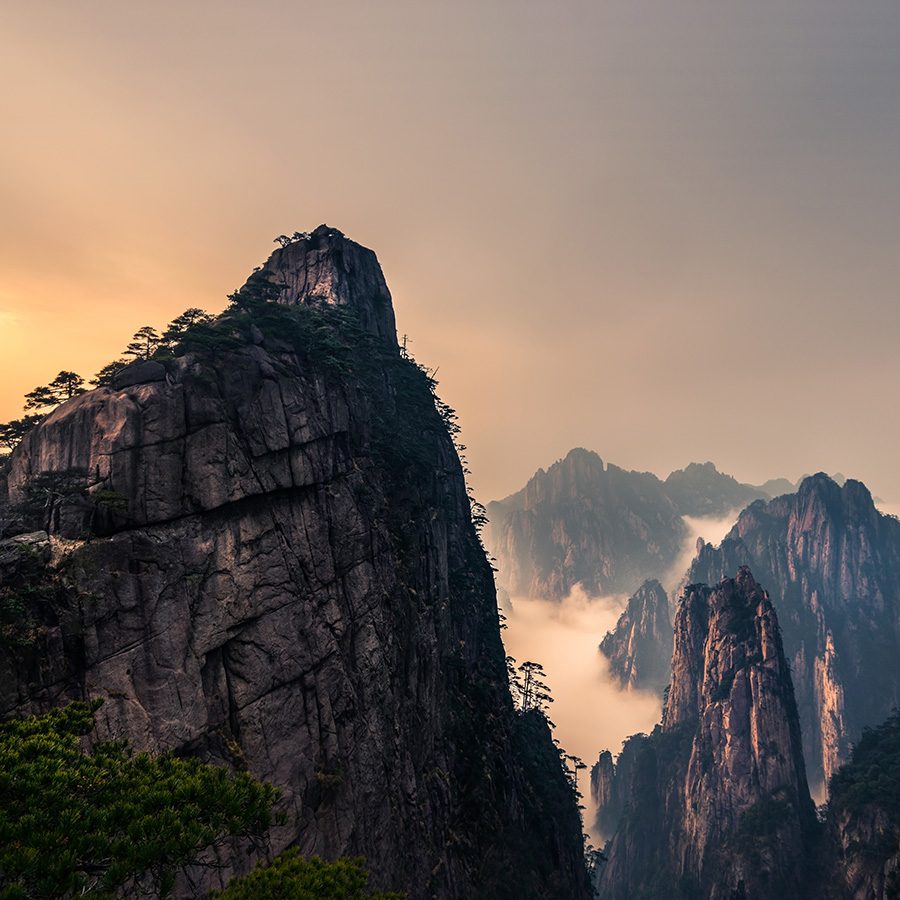
Credit: Nattapon/Getty Images

Credit: Siewwy84/Getty Images
5. Anhui - Huangshan (Yellow Mountain)
Huangshan, often hailed as the most spectacular mountain in the world, is beloved for its unique pines, peculiar rocks, sea of clouds and hot springs – collectively known as the “Four Wonders”. With the main scenic area spanning 160 square kilometres, Huangshan is a must-see for anyone visiting China.
Peak season: spring and autumn provide the most comfortable temperatures for exploring, so plan your visit between March and May, or September and October.
How to get there: domestic flights are available to Huangshan Tunxi International Airport from several Chinese cities, including Beijing, Xi’an and Guangzhou – we fly to them all. Once in Tunxi, take the airport shuttle bus to Huangshan Mountain Scenic Area.
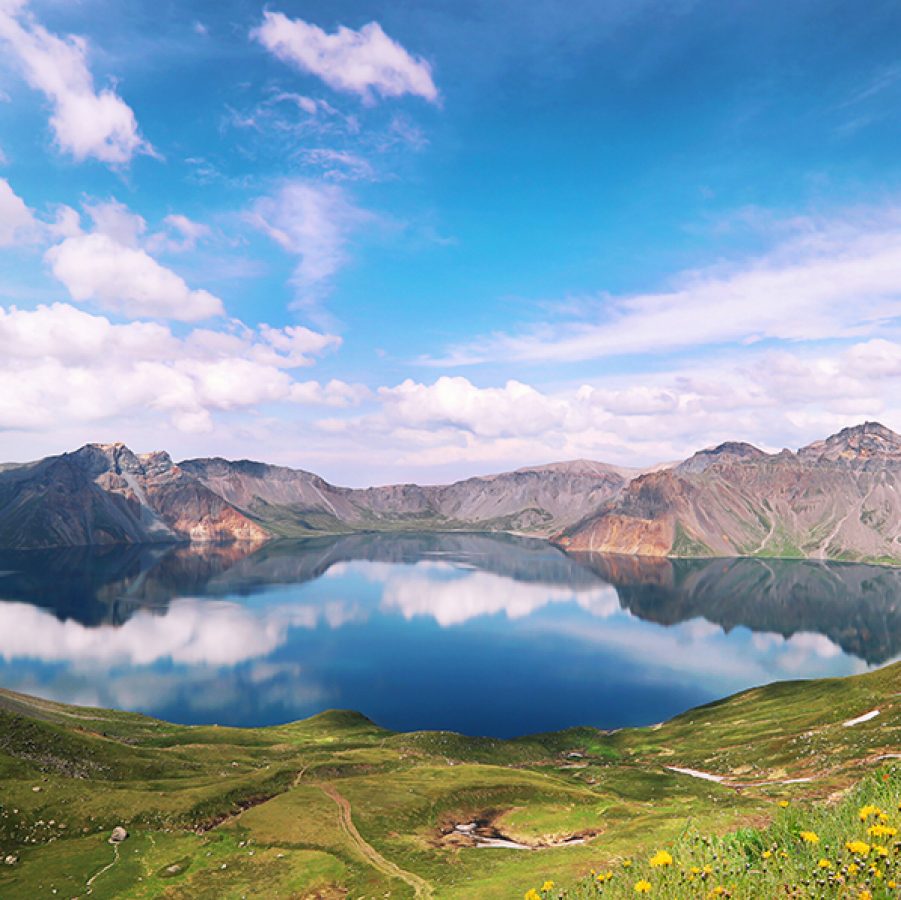
Credit: poongkyung/Getty Images
6. Jilin - Changbai Mountain and Heavenly Lake
Located in north-east China, Changbai Mountain is a dormant volcano – and Tianchi its crater lake. While you may need some luck to see Mount Fuji, spotting Tianchi Lake requires even more fortune. Due to the high-altitude climate, the lake is only visible for about 40 days a year. Yet, many still make the pilgrimage outside of this window, which is a testament to its allure.
Peak season: avoid the rainy season (June and July) and visit between August and September for a better chance of seeing the lake. May is also a good time to see the frozen lake before it thaws.
How to get there: fly to Beijing with us and catch a domestic flight to Changbaishan Airport. At the airport, you can take a direct shuttle bus to Beauty Pine Park in Chibei District – they run three times a day and bring you to the entrance of the scenic area.

Credit: Liu Lei/Getty Images

Credit: VCG/Getty Images
7. Dunhuang - Mingsha Mountain and Crescent Lake
So-named due to its crescent-moon shape, Crescent Lake is one of Dunhuang’s eight famous sites – and for good reason. The coexistence of desert and water here is nothing short of miraculous. Crescent Lake once faced the threat of drying up but has since been restored. Be sure to climb to the top of Mingsha Mountain for a panoramic view of the endless seas of sand.
Peak season: a visit in May or June allows you to avoid the scorching desert summer, while September and October offer a lower chance of sandstorms.
How to get there: fly to Xi’an with us, then travel to Dunhuang railway station from Xi’an North railway station. Once in the city, take the No.3 bus from Shazhou Market to Mingsha Mountain.
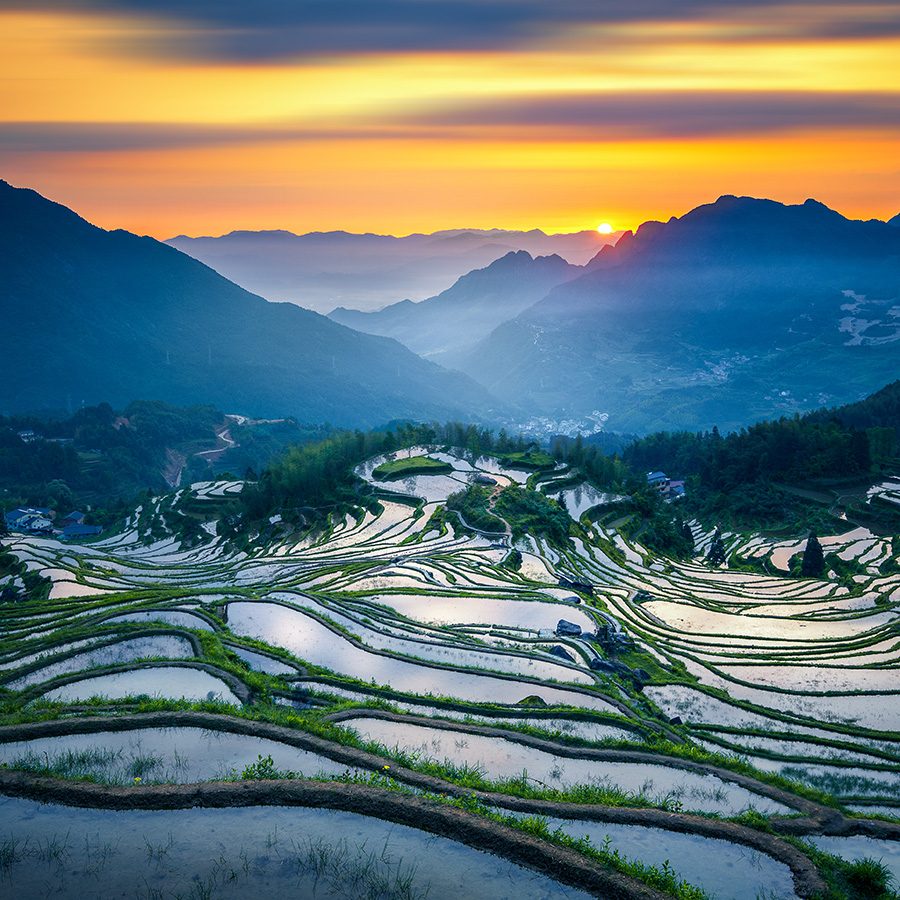
Credit: Eric Yang/Getty Images
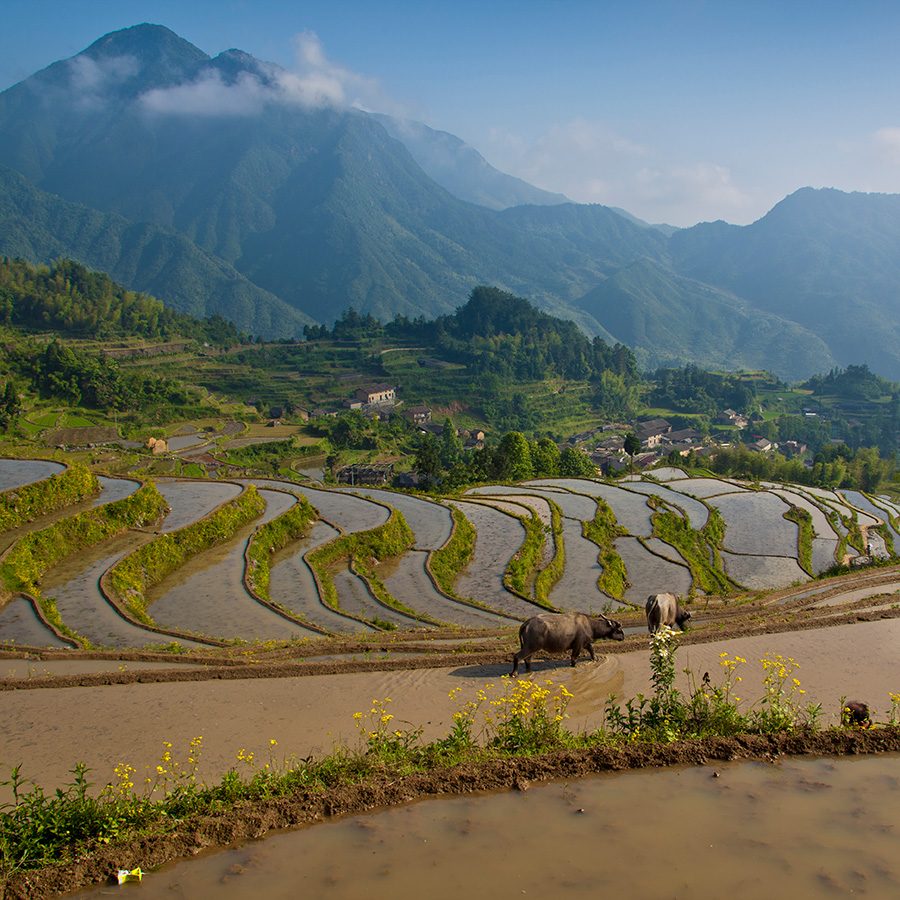
Credit: Mingming Wang/Getty Images
8. Zhejiang - Yunhe Rice Terraces
The Yunhe Rice Terraces are the largest in eastern China, spanning high mountains, hills, and valleys with up to 700 layers. Its layered terraces are breathtaking at any time of day – though never more so than at sunrise, coupled with a sea of clouds.
Peak season: May to June is planting season; a time to see the terraces and their beautiful water reflections.
How to get there: fly direct to Hangzhou with us, then take the high-speed train from Hangzhou East railway station to Lishui railway station. Travellers can book a private car to the Yunhe Rice Terraces – there are 16 trips a day and it takes around an hour and 15 minutes.
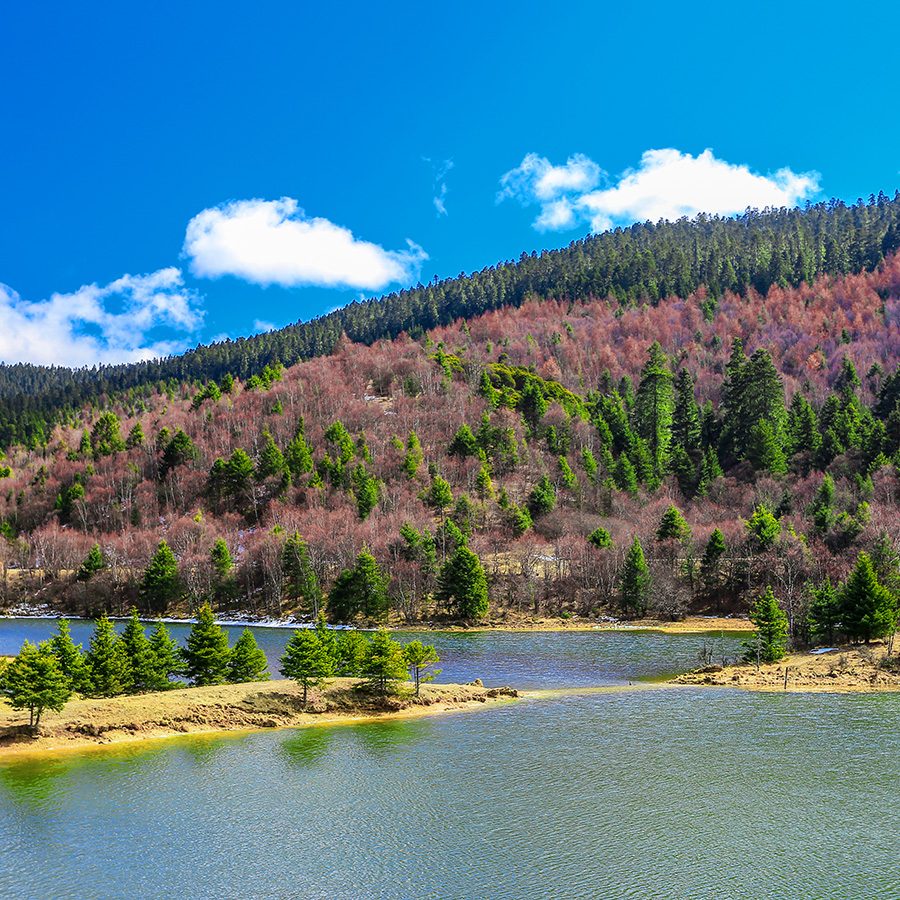
Credit: Mr. Scorates/Getty Images

Credit: chinaface/Getty Images
9. Yunnan - Pudacuo National Park
Located in Shangri-La, Yunnan, Pudacuo National Park is home to Shudu Lake, Militang Alpine Pasture and Bitahai Lake. In summer, the park is blanketed in vibrant flowers, which create transfixing reflections on the lake’s surface in the morning mist. In winter, it serves as a habitat for migratory birds, making it a haven for twitchers and wildlife enthusiasts alike.
Peak season: the best times to visit Pudacuo are during spring and autumn due to the mild weather.
How to get there: fly to Kunming, then transfer via a domestic flight to Diqing Shangri-La Airport. There are four daily direct shuttle buses, at 08.00, 08.30, 09.30 and 10.00 in the morning, departing from Shangri-La bus station to Pudacuo.
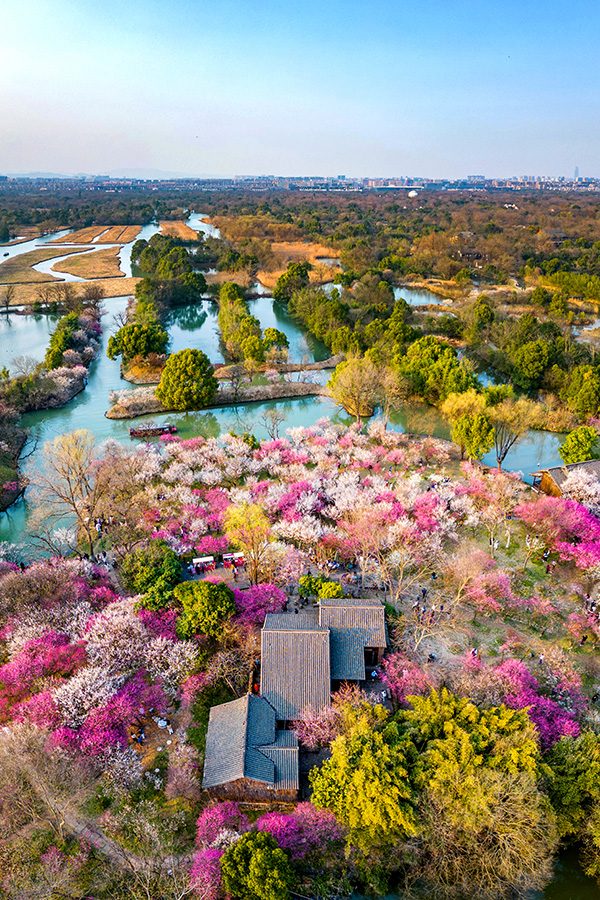
Credit: VCG/Getty Images
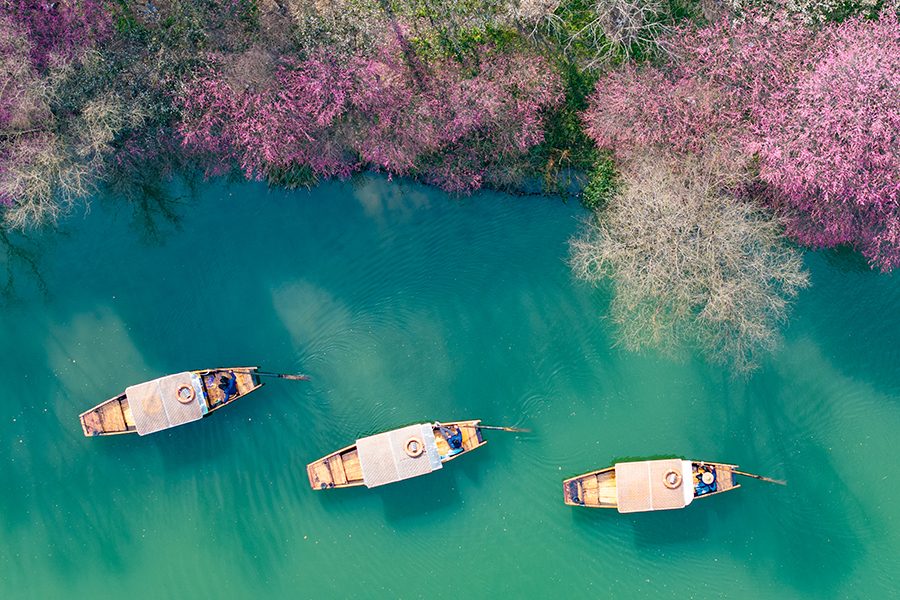
Credit: VCG/Getty Images

Credit: VCG/Getty Images
10. Hangzhou Xixi National Wetland Park
As the first national wetland park in China, Xixi National Wetland Park in Hangzhou comprises ponds, lake, swamps and other landforms. It offers rich ecological resources and different scenery throughout the year. It’s also regarded as a great place for flower viewing.
Peak season: from February to April, visitors can see plum blossoms, tulips and poppies blooming in turn.
How to get there: fly direct to Hangzhou with us. After arriving in the city, take Metro Line 3 to South Xixi Wetland station.
More inspiration
- China – the Chinese Mainland, Hong Kong SAR, Macao SAR and Taiwan Region
- Hong Kong SAR - English
- Chinese Mainland (China) - English
- Taiwan, China - English
- 香港特別行政區 - 繁體中文
- 中国內地 - 简体中文
- 中國台灣 - 繁體中文
- Africa
- South Africa - English
- Asia
- Bangladesh - English
- Korea - English
- Singapore - English
- Cambodia - English
- 한국 - 한국어
- Sri Lanka - English
- India - English
- Malaysia - English
- Thailand - English
- Indonesia - English
- Maldives - English
- ประเทศไทย - ภาษาไทย
- Indonesia - Bahasa Indonesia
- Myanmar - English
- Vietnam - English
- Japan - English
- Nepal - English
- Việt Nam - tiếng Việt
- 日本 - 日本語
- Philippines - English
- Australasia
- Australia - English
- New Zealand - English

